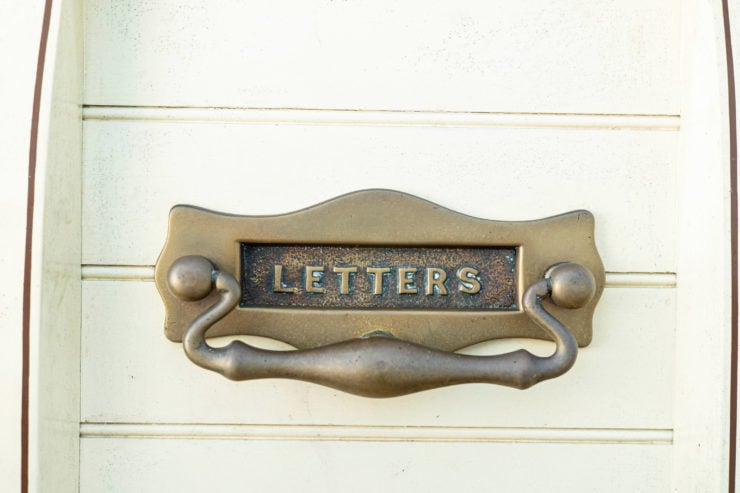This is 1914 Ford Model T Motor Caravan is said to be the oldest known motor caravan in the world. It was built just before the outbreak of the First World War for a wealthy British family, and it’s based on a Ford Model T chassis.
The steel ladder chassis was extended and strengthened by Baico, then the caravan body was custom built by Dunton of Reading, a company well-known for their traditional travellers’ caravans.
Fast Facts – The 1914 Ford Model T Motor Caravan
- This custom-built motorhome was completed in 1914, it’s based on the Ford Model T platform and it has a wooden caravan body built by Dunton in England.
- It was built for a member of the Bentall clan, a wealthy family who had founded the British department store chain of the same name.
- Power is provided by the 2.9 liter (177 cubic inch) Ford Model T engine which is capable of 20 hp in factory trim. The Model T had a top speed of 45 mph (72 km/h), and so it’s likely that this motorhome’s top speed would be somewhat lower than that due to the additional weight.
- This unusual vintage motorhome is now due to roll across the auction block with Bonhams on the 10th of September with a price guide of £20,000 – £30,000, which is approximately $23,700 – $35,600 USD.
Motorhome: On The Origin Of Species
There isn’t complete agreement on who built the first motorhome or when, but we do know that the first production motorhome was almost certainly the Touring Landau model offered by the Pierce-Arrow Motor Car Company in 1910.
The Touring Landau was a motorhome in every modern sense of the word, it offered an onboard toilet and ample storage for camping equipment. It’s worth remembering that in 1910 there were no highways and relatively few sealed roads, so any cross-country journey was likely to be an adventure – which is why the Touring Landau was developed.
In 1915 the concept of the motorhome exploded into the consciousness of many Americans thanks to the custom-built “Gypsy Van” belonging to the Conklin family, who departed from Huntington, New York on a cross-country camping trip.
The Gypsy Van had been built by Roland Conklin’s Gas-Electric Motor Bus Company. The adventures of the Conklin family as they headed to San Francisco were covered extensively in the newspapers of the day, including The New York Times.
By the 1920s the concept of the caravan or camper trailer had been well established, and by the 1930s companies like Bowlus and Airstream were making their iconic all-aluminum trailers that took their inspiration from the world of aviation.
After WWII the concept of the RV exploded in popularity, the Winnebago company was founded in 1958 and by the 1970s America’s biggest automaker, General Motors, had the GMC Motorhome in production.


Today the RV industry posts sales figures in the billions of dollars annually, many Americans had holidays in RVs as kids and when they have kids of their own they repeat the experience.
The 1914 Ford Model T Motor Caravan Shown Here
The vehicle you see here is said to be the oldest surviving motorhome anywhere in the world, it dates back to 1914 which slots it in-between the 1910 Pierce-Arrow Touring Landau and the Conklin family’s Gypsy Van of 1915.
The Ford Model T had been released just six years earlier in 1908 and the automotive revolution it sparked was still gaining steam. The Model T was powered by a 2.9 liter (177 cubic inch) flathead inline-four cylinder engine producing 20 bhp which gave the car a top speed of 45 mph and a sustained cruising speed a little slower.
When a member of the wealthy British Bentall family was looking for a motorhome they started with a Model T which had its chassis professionally lengthened by Baico before its aforementioned caravan body was designed and built by Dunton.
The style of the body is somewhat akin to the railroad carriages of the day, though perhaps a little smaller of course. It’s almost entirely made of wood, with period correct fitting and fixtures throughout.
The driver’s seat is a plush leather sofa with seating for two, this can then be turned 180º to function as the primary sofa in the living area. Further back in the living area you’ll find two overhead single bunks with a double bed below, there’s a wood stove that’s used for cooking and heating, a folding table, an additional leather stool, cupboard space, and even a mail slot.
The early life of this unusual motorhome is largely lost to history but it is known that it was rediscovered in the 1970s by Mr Leo Smith who restored it alongside his friend (and talented cabinetmaker) Mr Robin Tanner.
Once completed the vehicle was entered into the 1976 HCVC London-Brighton Run, where it won seven awards including the concours. In the years since the motorhome has taken part in many more London-Brighton Runs, it has participated in various other rallies and historic vehicle shows, and it’s been featured on television.
It’s now due to roll across the auction block with Bonhams on the 10th of September with a price guide of £20,000 – £30,000 which is approximately $23,700 – $35,600 USD. If you’d like to read more about it or register to bid you can visit the listing here.

















Images courtesy of Bonhams










